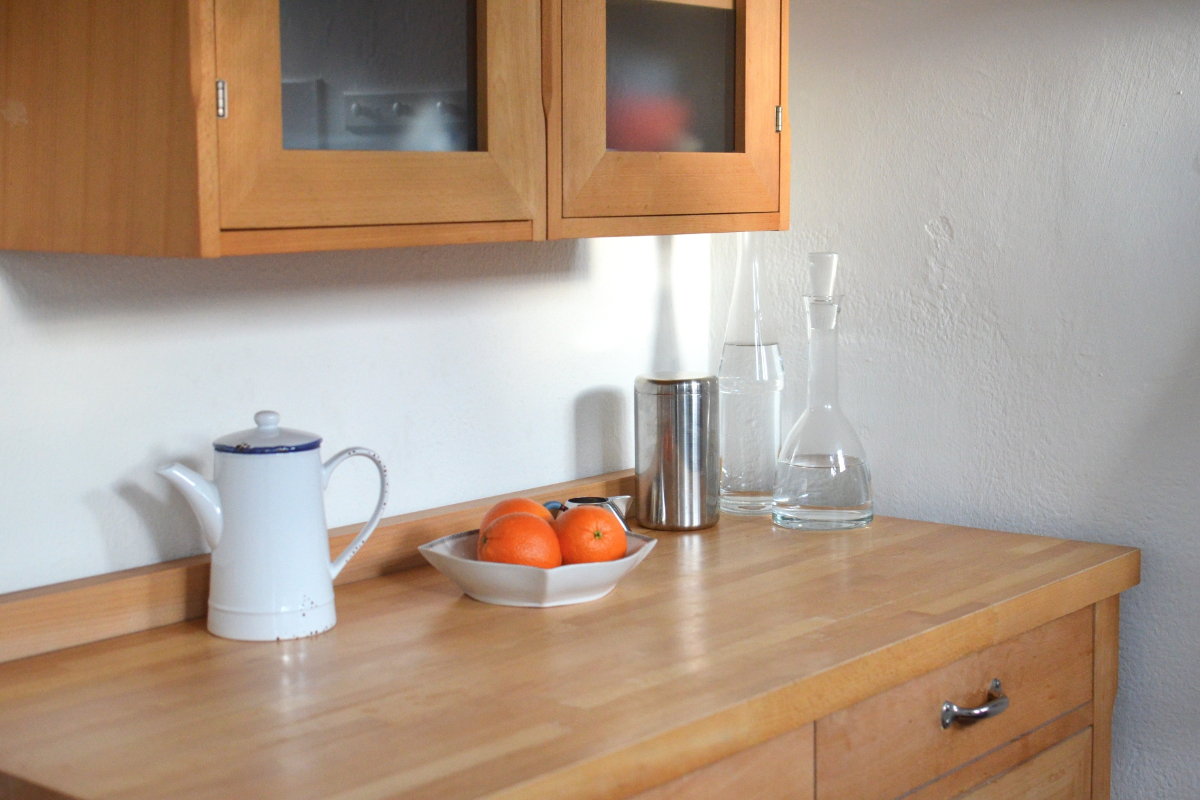Cultivating Mindfulness In Everyday Tasks
There are some affiliate links below, but they are all products I highly recommend. For more info, view my disclosure here.
Are you tired of feeling overwhelmed and disconnected from the present moment? Do you often find yourself multitasking, constantly thinking about what’s next instead of fully immersing yourself in the task at hand? It’s time to bring mindfulness into your everyday tasks and experience the transformative power of being fully present.
Cultivating mindfulness in your daily activities can bring a sense of calm and clarity, allowing you to find joy in the ordinary moments of life. From mindful eating to embracing exercise as a meditative practice, this article will guide you on how to bring awareness to your daily activities.
Discover how to create mindful spaces in your home and workplace and overcome challenges in maintaining consistency in practicing mindfulness. Get ready to embark on a journey of self-discovery and inner peace as you learn to cultivate mindfulness in your everyday tasks.
The Power of Being Present
You won’t believe the incredible power you have when you fully embrace the present moment. It’s easy to get caught up in the busyness of life, constantly thinking about the past or worrying about the future. But when you learn to be present in the here and now, you unlock a whole new level of awareness and fulfillment.
Imagine this: you’re washing the dishes after a long day. Normally, you would rush through this task, thinking about all the other things you need to do. But if you choose to be present, you can fully engage your senses in the experience. Feel the warm water on your hands, listen to the soothing sound of the water running, and notice the bubbles forming. You might even find a sense of calm and contentment in this simple act.
Being present doesn’t just enhance mundane tasks; it can also improve your relationships. When you’re fully present with someone, you become a better listener and communicator. You notice subtle nuances in their words and body language, allowing for deeper connections and understanding.
Why not give it a try? Start by taking a few moments each day to practice mindfulness in everyday tasks. Whether it’s brushing your teeth, eating a meal, or even just walking, bring your attention fully to the present moment. You’ll be amazed at the power it holds and the positive impact it can have on your life.
Finding Joy in the Ordinary
Discovering happiness in the mundane can enhance your overall well-being and allow you to find beauty in the simplest of moments. Life is often filled with ordinary tasks that we tend to overlook or rush through. However, by cultivating mindfulness, you can bring a sense of joy and appreciation to these everyday activities.
Take, for example, washing dishes. Instead of seeing it as a chore, approach it with a different mindset. Feel the warm water on your hands, notice the bubbles forming, and the sound of the water running. Be fully present in the moment, focusing on each movement and sensation. In doing so, you may find that this mundane task becomes an opportunity for relaxation and reflection.
Similarly, when you’re walking outside, pay attention to your surroundings. Notice the colors of the flowers, the sound of birds chirping, and the feel of the breeze on your skin. By simply being present and fully engaged in the present moment, you can find joy in the ordinary.
In our fast-paced world, it’s easy to rush through tasks and miss out on the beauty that surrounds us. By cultivating mindfulness in everyday tasks, you can bring a sense of joy and appreciation to even the most mundane activities. Take a moment to slow down, be present, and discover the happiness that lies in the ordinary.
Bringing Awareness to Daily Activities
Bringing awareness to our daily activities can transform the ordinary into moments of beauty and joy. When we take the time to be present and fully engaged in the tasks we do every day, we open ourselves up to a deeper experience of life.
It’s easy to get caught up in the busyness of our lives and rush through our routines without really paying attention. But when we approach each activity with mindfulness, we begin to notice the small details that we may have overlooked before.
Take, for example, the simple act of washing the dishes. Usually, we view this as a chore that needs to be done quickly so we can move on to more important things. But if we bring awareness to this activity, we can appreciate the warmth of the water on our hands, the soothing sound of the running faucet, and the satisfying feeling of cleanliness as we finish. Suddenly, washing the dishes becomes an opportunity to connect with the present moment and find joy in the simplicity of the task.
The same can be said for other daily activities like cooking, cleaning, or even walking. By bringing awareness to these tasks, we can turn them into meditative practices that ground us in the here and now. Mindfulness allows us to fully engage with our surroundings and appreciate the beauty that exists in the ordinary.
The next time you find yourself rushing through your daily activities, take a moment to pause, breathe, and bring awareness to what you’re doing. You may be surprised at the moments of beauty and joy that arise from the seemingly mundane.
Mindful Eating for a Healthier Relationship with Food
Indulge in the pleasure of savoring each bite mindfully, allowing yourself to form a healthier relationship with food. Mindful eating is a practice that encourages you to be fully present and aware while consuming your meals. Instead of mindlessly devouring your food, take the time to appreciate the flavors, textures, and smells that each bite offers.
When you engage in mindful eating, you become more attuned to your body’s hunger and fullness cues. This allows you to eat according to your body’s needs, rather than relying on external factors like portion sizes or societal norms. By slowing down and paying attention to your meal, you can better recognize when you are satisfied, preventing overeating and promoting a healthier weight.
Mindful eating helps you to develop a greater sense of appreciation for the food you consume. You may start to notice the effort and care that goes into preparing your meals, fostering a deeper connection to the nourishment you provide your body. This gratitude can extend beyond your plate, encouraging you to make more conscious choices when it comes to selecting and preparing your food.
Incorporating mindfulness into your eating habits can also enhance your overall well-being. By focusing on the present moment and fully experiencing each bite, you can reduce stress and anxiety related to food. This can lead to a more positive and enjoyable eating experience, promoting a healthier relationship with food and a greater sense of overall satisfaction.
Take the time to savor each bite and cultivate mindfulness in your daily meals.
Mindful Movement: Embracing Exercise as a Meditative Practice
Embracing exercise as a meditative practice allows you to fully immerse yourself in the present moment, creating a deeper connection between your mind and body. When you approach exercise with mindfulness, you bring awareness to each movement, each breath, and each sensation in your body.
It’s not just about going through the motions; it’s about being fully present and engaged. Instead of viewing exercise as a chore or something you have to do, you can see it as an opportunity to cultivate mindfulness and find joy in movement. Whether you’re running, swimming, or practicing yoga, you can focus on the rhythm of your breath, the feeling of your muscles working, and the sensation of your body moving through space.
Each step, each stroke, each pose becomes an opportunity to be present and connect with yourself on a deeper level. By approaching exercise in this way, you may find that it becomes a form of meditation in motion. Your mind becomes more calm and focused, and you develop a greater sense of body awareness.
As you let go of distractions and judgments, you can fully embrace the experience of moving your body and appreciate the amazing things it can do. So next time you lace up your shoes or roll out your mat, remember to bring mindfulness to your exercise routine. Embrace the opportunity to fully immerse yourself in the present moment and cultivate a deeper connection between your mind and body.
Creating Mindful Spaces in Your Home and Workplace
When you intentionally design your home and workplace with mindful spaces, you create environments that foster a sense of peace, clarity, and presence. Mindful spaces are areas that are intentionally created to support your well-being and help you cultivate mindfulness in your everyday life.
These spaces can be as simple as a designated corner in your home or office where you can sit and meditate, or they can be more elaborate, such as a Zen garden or a designated room for yoga and meditation.
Creating a mindful space starts with decluttering and organizing the area. Remove any unnecessary items that may distract you or cause stress. Keep only the essentials and arrange them in a way that promotes a sense of calm and tranquility. Consider adding elements from nature, such as plants or natural materials, as they can help create a soothing atmosphere.
Think about the lighting in your space. Natural light is ideal, as it can uplift your mood and improve focus. If natural light is limited, opt for soft and warm artificial lighting that mimics natural light. Avoid harsh and bright lights that can be overwhelming and disrupt your sense of peace.
Consider incorporating elements that engage your senses, such as soothing music, essential oils, or a comfortable cushion or chair. These elements can help you relax and create a peaceful ambiance in your mindful space.
By consciously designing your home and workplace with mindful spaces, you can create environments that support your mindfulness practice and enhance your overall well-being. These spaces serve as reminders to slow down, breathe, and reconnect with the present moment, no matter how busy or chaotic your surroundings may be.
Overcoming Challenges and Maintaining Consistency in Practicing Mindfulness
Maintaining consistency in practicing mindfulness can be challenging, but it’s worth the effort for the peace and clarity it brings to our lives. Life can get busy, and finding time for mindfulness may seem difficult, but with a little determination and some helpful strategies, you can overcome these challenges.
One way to maintain consistency is by integrating mindfulness into your daily routine. Find moments throughout the day where you can pause and check in with yourself. It could be during your morning coffee, while waiting for the bus, or even during a quick walk around the block. These small pockets of time can make a big difference in cultivating mindfulness.
Another challenge is staying motivated. To combat this, set realistic goals and celebrate your progress along the way. Start with short meditation sessions and gradually increase the duration as you become more comfortable. Remember, it’s not about perfection; it’s about showing up consistently and making an effort.
Surround yourself with a supportive community. Join a mindfulness group or find a meditation buddy who can hold you accountable. Connecting with others who are also on a mindfulness journey can provide encouragement and inspiration.
While maintaining consistency in practicing mindfulness can be challenging, the rewards are well worth it. By integrating mindfulness into your daily routine, setting realistic goals, and finding support, you can overcome these challenges and experience the peace and clarity that mindfulness brings to your life.






